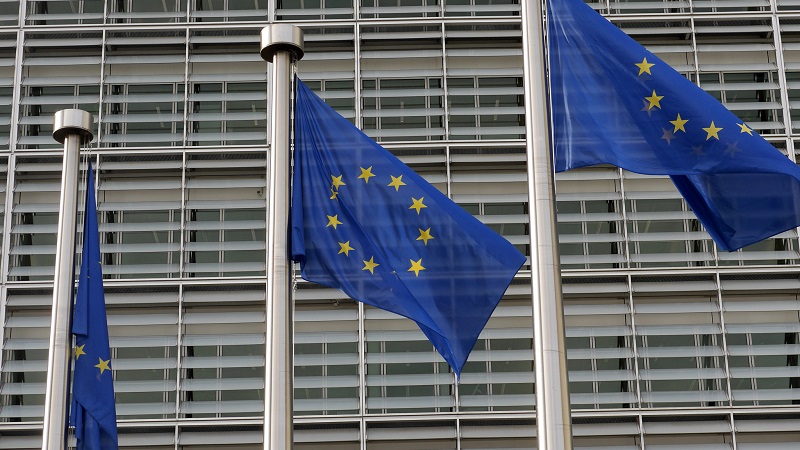It was another week of grim statistics from the European economy. Inflation hit a new record high of 8.6% in June, cementing the ECB’s commitment to a rate rise in July.
Manufacturing production levels fell for the first time in two years, while the consumer confidence indicator dropped to its lowest level since the start of the pandemic. The EU recently lowered its economic growth forecast for the eurozone in 2022 by 1.3 percentage points to 2.7%
This comes at a time when there is a looming energy crisis across the region.
Steven Bell, chief economist at BMO Global Asset Management, says: “It is very likely that Germany will be forced to take over its energy system under the third stage of its emergency plan, and ration gas. That is an extraordinary development. Other European countries may also face a problem….and it is a great source of uncertainty.”
Economy Minister Robert Habeck recently warned Der Spiegel magazine that Germany was heading for a gas shortage if Russian gas supplies remain as low as they are now: “Companies would have to stop production, lay off their workers, supply chains would collapse, people would go into debt to pay their heating bills, that people would become poorer.”
As the eurozone’s largest economy and the source of much of its growth, Germany’s weakness is a problem for the whole region.
Drought driving up energy and food prices
DWS recently highlighted a new threat emerging, the spread of drought: “In Spain and southern France, temperatures surpassed 43ºC last month, levels more commonly seen in July or August. In Italy, levels of the River Po have fallen to 70-year lows due to poor rainfall in the western Alps. Recent thunderstorms over Northern Italy provided little temporary relief.
“Northern Italy represents almost 50% of European rice production. Apart from risotto prices in supermarkets, low reservoir and rivers levels also threaten electricity generation.
“Italian hydropower production is already 40% lower in the first five months of 2022 compared to a year earlier. That mainly reflects scarce water being diverted for irrigation in agriculture. In nuclear, power generation is reliant on river levels remaining high enough for cooling purposes.”
Bell says that the consumer has already been feeling miserable. He points to German retail sales, which declined in Q2 as well as Q1. Higher energy and agricultural prices are likely to create even more weakness and insecurity.
The most recent S&P Global Flash Eurozone PMI produced a damning verdict: “Eurozone economic growth deteriorated sharply to a 16- month low in June, according to preliminary PMI data, reflecting a stalling of demand growth.
“Manufacturing output contracted for the first time in two years and service sector growth cooled considerably, easing most notably for consumer-facing services.
“Companies also scaled back their business expectations for output over the coming year to the lowest since October 2020. Both the stagnation of demand and worsening outlook were widely blamed on the rising cost of living, tighter financial conditions and concerns over energy and supply chains linked to the Ukraine war and ongoing pandemic disruptions.”
Buying opportunity?
This gloomy outlook has inevitably been reflected in the year-to-date performance of the Europe ex UK and European Smaller Companies sectors. The average Europe ex UK fund has dropped 16.4%, below that of the average Japanese or UK All Companies fund (which are both down an average of 12.9%).
European smaller companies have performed worse than any other sector, falling an average of 24.6%. The average North American fund is down 12% and global emerging markets down 11.5%.
This suggests that, in spite of the gloom, it may be a good moment to start tentatively looking at Europe again. Bell is relatively upbeat about the health of parts of the corporate sector within Europe.
He says: “Manufacturers, for example, are becoming more chipper. They’ve got high margins, they’re beginning to see some of these supply constraints easing and so far, so good. Wages are going up, but they’re not that high and it is consistent with the European’s central banks targets.
“European companies have been quite canny. They’re making one-off payments, which are a nice boost to pay for employees, but they’re less likely to find rises sealed into basic pay rates.”
The latest S&P PMI manufacturing data also showed tentative signs of supply chains edging closer to stability.
It said: “Input lead times lengthened to the least marked extent in a year-and-a-half. There was also a softening of inflationary pressures as both input costs and output prices rose at slower rates.”
As such, Europe is in the familiar situation of having an awful economy, but a lots of stock picking opportunities.
James Rutherford, head of European Equities at Federated Hermes, said: “European equity markets have been buffeted by increasing concerns over Russian gas supply, and the prospect of industrial plant shutdowns and energy scarcity in Germany has weighed heavily on shares in the industrial sector.
“With some proverbial babies being thrown out with the bathwater, we see some opportunities among them.”










